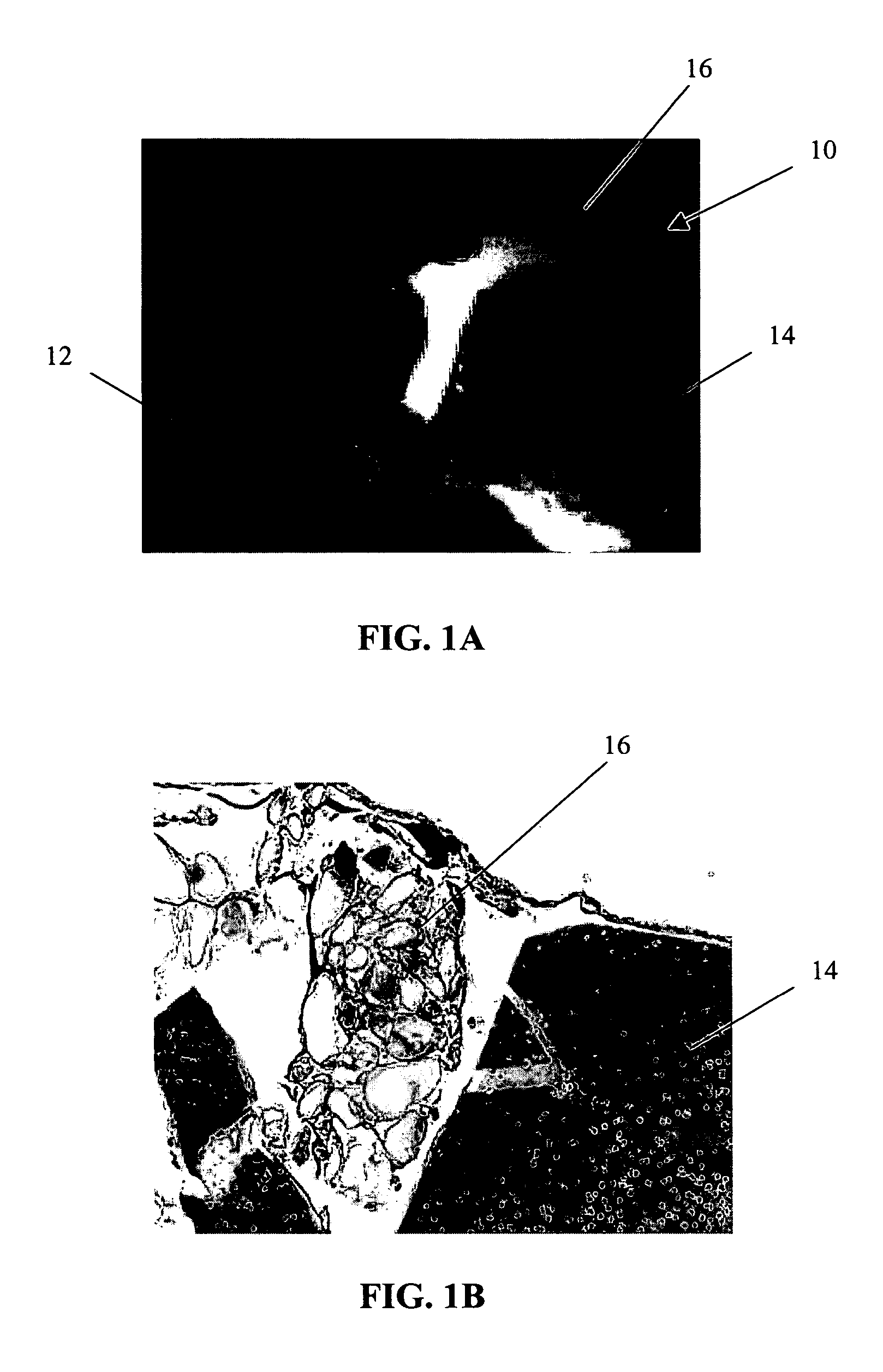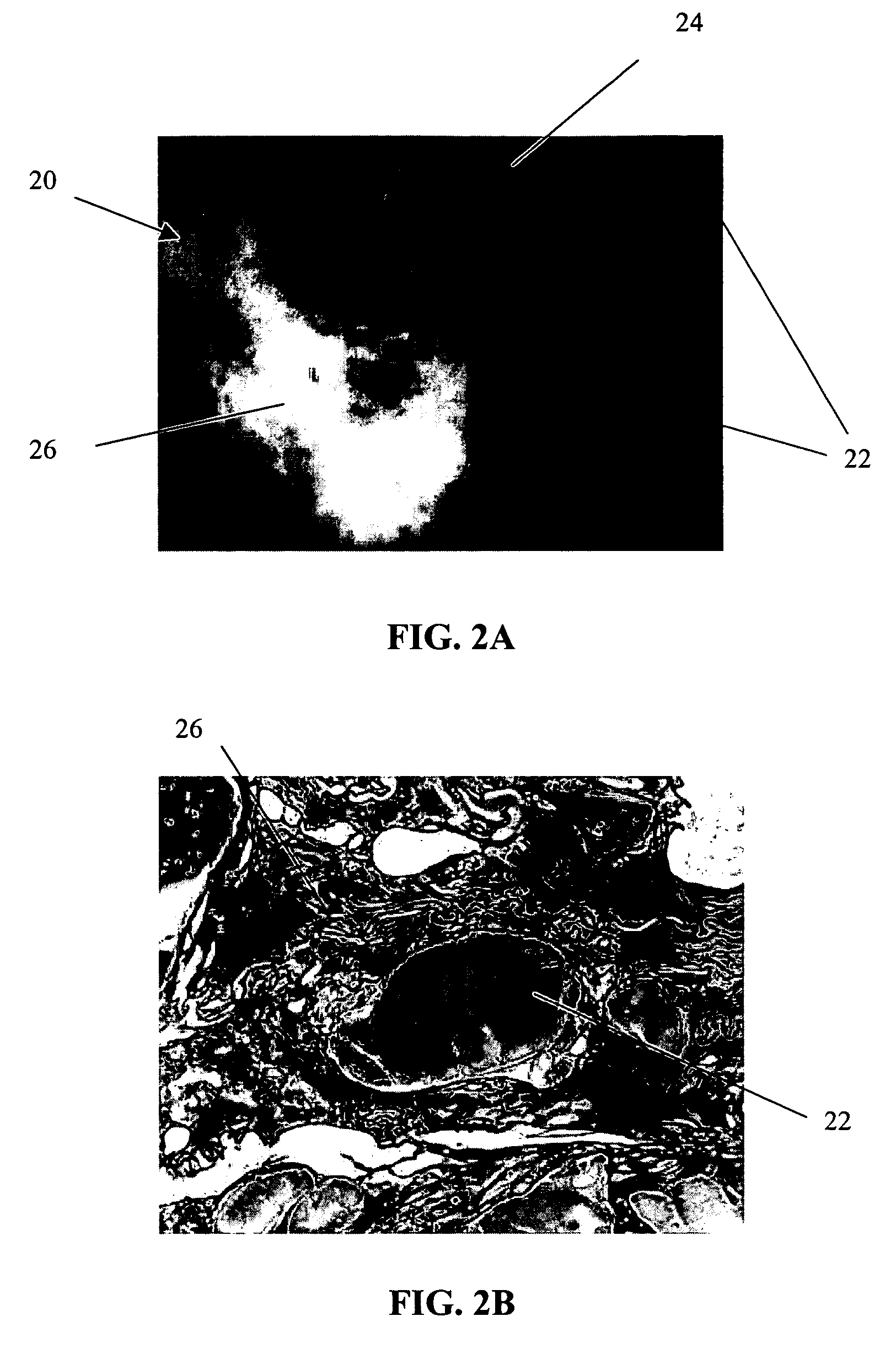Conformable tissue repair implant capable of injection delivery
a tissue repair and implant technology, applied in the field of methods and apparatuses, can solve the problems of inconvenient injection delivery, inconvenient injection delivery, and high labor intensity, and achieve the effect of promoting new cellular growth and enhancing healing
- Summary
- Abstract
- Description
- Claims
- Application Information
AI Technical Summary
Benefits of technology
Problems solved by technology
Method used
Image
Examples
example
[0064] The primary objective of this study was to examine the outgrowth of chondrocytes in a sample implant comprising bovine cartilage fragments, fibrin glue and polyglycolic acid (PGA) granules in vitro. For the study, minced bovine cartilage and PGA granules of different sizes were mixed with fibrin glue (Tisseel™) and injected into a mold to form bioadhesive plugs in accordance with Table 1 below. The resulting plugs were then cultured in cell culture or chondrogenic medium for 3 and 6 week periods, respectively. After incubation, the plugs were fixed, sectioned and stained with hematoxylin and eosin (H & E).
TABLE 1Experimental Conditions for Study of Chondrocyte Outgrowthfrom Composite Mold Containing Fibr in Glue, PLA Granules,and Bovine Cartilage FragmentsAmountIncubationof mincedAmount ofAmount ofperiodConditionscartilagePGAfibrin glue3 & 6 weeksComposite plug100 mg31 mg400 μln = 1 eachwith PGA (158 μm)granulesComposite plug100 mg31 mg400 μln = 1 eachwith PGA (286 μm)granu...
PUM
 Login to View More
Login to View More Abstract
Description
Claims
Application Information
 Login to View More
Login to View More - R&D
- Intellectual Property
- Life Sciences
- Materials
- Tech Scout
- Unparalleled Data Quality
- Higher Quality Content
- 60% Fewer Hallucinations
Browse by: Latest US Patents, China's latest patents, Technical Efficacy Thesaurus, Application Domain, Technology Topic, Popular Technical Reports.
© 2025 PatSnap. All rights reserved.Legal|Privacy policy|Modern Slavery Act Transparency Statement|Sitemap|About US| Contact US: help@patsnap.com



